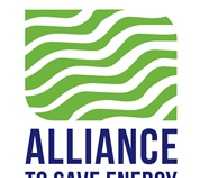EPA, Department of Justice, and Hecla Limited settle Clean Water Act violations, reduce pollution bound for South Fork Coeur d’Alene River
Seattle, WA – June 2, 2015 – (RealEstateRama) — The U.S. Environmental Protection Agency, U.S. Department of Justice, and Hecla Limited, owner of the Lucky Friday Mine and Mill, have reached a settlement concerning water pollution violations near the headwaters of the South Fork Coeur d’Alene River. The South Fork Coeur d’Alene River runs through the heart of North Idaho’s “Silver Valley,” ambitiously recovering from a century of mining pollution. Hecla will pay a $600,000 penalty as part of the settlement.
Hecla’s violations, occurring between 2009 and 2014 at its Lucky Friday Mine and Mill, cover both effluent limit violations and unpermitted discharges to the SF Coeur d’Alene River and two of its tributaries. Hecla’s tailings pond 3 was found seeping metals-laden water that Hecla discharged into Harris Creek. During construction of a tailings pond 4, Hecla failed to install adequate controls to ensure that storm water runoff was properly managed and soon turbid runoff destroyed a water intake at a downstream fish hatchery. In both cases, Hecla failed to properly report the event to EPA. In all, EPA inspections documented close to 500 combined (effluent limit, unpermitted, and reporting) violations.
“The last thing rivers like the South Fork Coeur d’Alene need are unpermitted discharges and permit violations,” said Ed Kowalski, Director of Compliance and Enforcement at EPA’s Seattle office. “Compliance with wastewater discharge permits is critical to protecting Idaho’s waterways. By maintaining the integrity of its discharges and ponds, and reporting problems quickly, Hecla can help protect and restore the health of the South Fork and its tributaries.”
The South Fork Coeur d’Alene River is already severely compromised due to dissolved metals from historic mining activities. Major tributaries are devoid of aquatic life due to high concentrations of dissolved zinc and cadmium, while other areas only partially support fish and other aquatic species, offering migration routes but not spawning and rearing habitat. The Lucky Friday mine operations are seen as the highest single contributor of metals to the South Fork above Mullan. The mine’s NPDES permit limits were developed to ensure that operation discharges protect local fish and other aquatic life in the river and its tributaries.
The NPDES permit program controls water pollution by regulating point sources that discharge pollutants into the waters of the United States. Wastewater discharges from industrial sources like mining may contain pollutants at levels that could affect the quality of water bodies and waterways.
For more information on NPDES permits, visit http://cfpub1.epa.gov/npdes/home.cfm
Contact: Mark MacIntyre, EPA Public Affairs, 206-553-7302,















